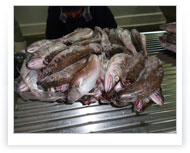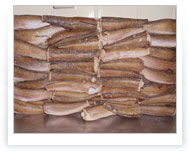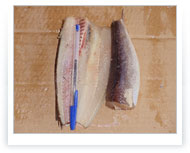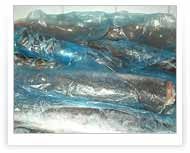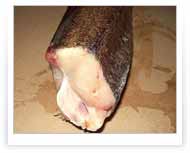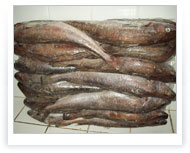| |
Description
The hake has a long and slightly slender body. Its mouth is big and protractile, and the caudal peduncle short. It has a tail fin that ends in a straight line in adults, and two dorsal fins; the first one with spines and the second dorsal fin with a big bilobed base. It shows medium size cyclod scales that can be easily removed.
Distribution
The species can be found in the South -West Atlantic from latitude 25º 00' South (Cabo Frío, Brazil) to latitude 47º 00' South.
Feeding Habits
Hakes are carnivorous euryphagous and opportunistic predators of the demersal nectopelagyc fauna. The diet of these animals is composed by fish, specially Argentine anchovy (Engraulis anchoita), hake (Merluccius hubbsi), plankton (Euphausiaceans and amphipods) and lantern fishes.Molluscs such as squid do also appear in the diet of hakes.
Environment and biology
It is a demersal – pelagic species that forms dense schools near the bottom during day time and at night it disperses. Its habits are, one could say, in association with the convergence of the Malvinas current. The temperature ranges between 9º and 11º C (48.2 to 51.8 F), what makes this species a steno thermal one. Individuals with a size bigger than 35 cm perform seasonal migrations within their main distribution zone.
|

